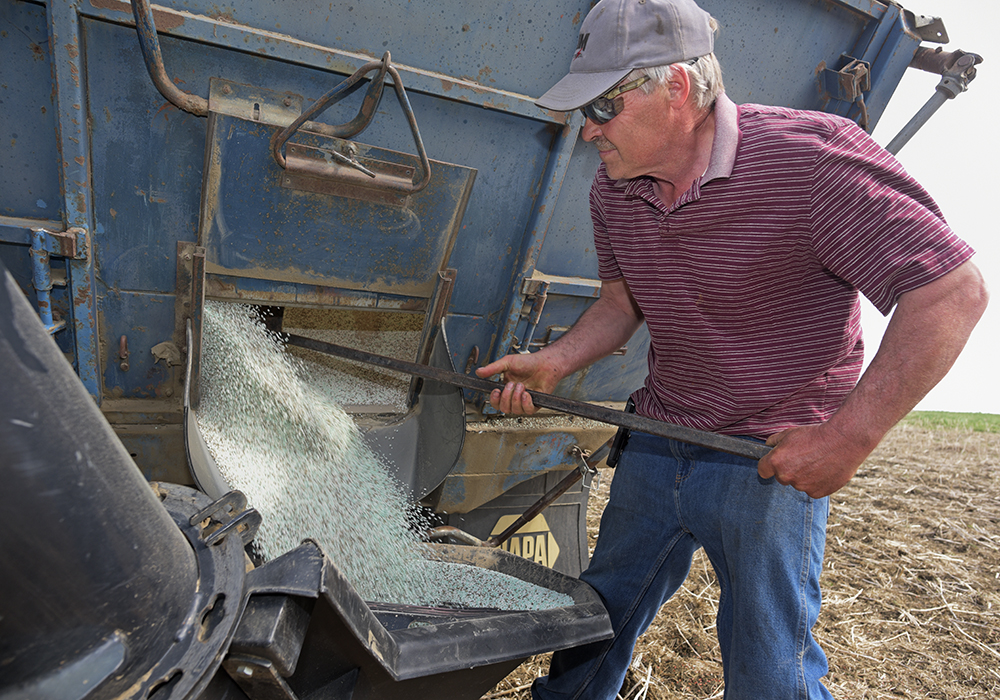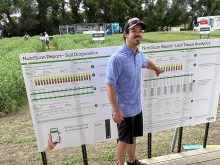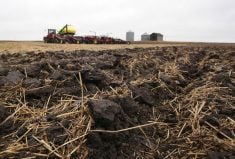A scientist from Ontario’s University of Guelph says the federal government is rushing its plan to cut greenhouse gas emissions from nitrogen fertilizer.
Other scientists are concerned the current plan could contribute to the urban/rural divide where city dwellers view farmers as the bad guys, who are trying to destroy the planet.
“I’m afraid when you rush things, without a serious plan in place… and proper funding in place, it’s going to cause some harm. That’s my fear,” said Manish Raizada, who studies technologies and practices that reduce the need for synthetic nitrogen fertilizer.
Read Also

New fertilizer product aims to reduce tie-up, improve soil health
A new phosphorus fertilizer, launched at Ag in Motion 2025, promises to reduce nutrient tie-up and deliver slow-release feeding throughout the growing season.
“I don’t want all of this to be on the back of farmers, (where) they have to suddenly make changes.”
The federal government is pushing a plan where Canadian farmers reduce greenhouse gas emissions from nitrogen fertilizer by 30 percent, relative to 2020 levels, in the next eight years.
In 2019, emissions from fertilizer were around 12.75 million tonnes. The feds want that number to sink to nine million tonnes by 2030.
Over the last 20 years, the increased use of nitrogen fertilizer has increased crop yields, but the use of “nitrogen (N) fertilizer… results in nitrous oxide emissions, a potent greenhouse gas with a global warming potential 265 to 298 times that of carbon dioxide,” Agriculture Canada said in a discussion document on its emission reduction plan.
The 30 percent reduction is a target, it’s not mandatory. The feds have proposed several ways to cut emissions, including more adoption of 4R nutrient program (right rate, right source, right time and right place).
The government is also encouraging more use of cover crops and improved nitrogen management to achieve a cut in nitrous oxide emissions.
Raizada agreed that nitrous oxide emissions are a serious issue. But farmers need a realistic timeframe and sufficient subsidies to achieve such a goal.
“Nitrous oxide emissions are very damaging for the atmosphere. Even the ozone layer. We have to reduce it, as quickly as possible,” he said. “But I’m not convinced this government is serious about this.”
The 30 percent cut might be possible in 10 to 15 years, but only with a thoughtful plan and a “historic” investment of cash on the table, Raizada said.
“Serious, direct money…. Pay for it.”
For instance, if the government wants farmers to grow cover crops, the feds should pay farmers a specific rate per acre.
Raizada isn’t the only Canadian scientist who has criticized the government’s plan to cut emissions related to fertilizer.
Sylvain Charlebois, from Dalhousie University, has written that Ottawa’s insistence on an absolute reduction of emissions, regardless of the efficiency of fertilizer use, could harm the productivity of Canadian farms and contribute to food shortages.
More broadly, the policy is part of a trend where urbanites and urban perceptions of agriculture, are dictating how food is grown on Canadian farms.
“Our great rural-urban divide has always fuelled food politics, and that’s not going to change. But agri-food policies are increasingly becoming urbanized by an agenda that is pushing the entire western world toward the precipice of a food security catastrophe,” Charlebois wrote in the Toronto Sun.
The discussion around fertilizer and emissions is advancing a viewpoint, where farmers and nitrogen are viewed as threats to society.
“How did farmers become the bad guys?” Raizada asked.
“There’s two narratives that need to be reversed: that farmers are evil and that nitrogen is evil…. Nitrogen has become a ‘chemical.’ But nitrogen is a natural building block for chlorophyll.”
In a U of G news release, Raizada argued that nitrogen is essential for sustainable farming because it helps plants produce chlorophyll and remove carbon dioxide from the atmosphere
“Without it, plants cannot harvest sunlight,” he said. “What’s more is that nitrogen is needed to synthesize the enzyme that allows plants to convert carbon dioxide into organic matter, which in turn removes it from the atmosphere,” the release said.
Raizada recommends that farmers and researchers receive financial incentives for better and cheaper soil testing, machinery subsidies so farmers can split their fertilizer doses and cash payments to farmers who use complex crop rotations, intercrops and cover crops, along with other suggestions.
“Farmers want to become greener but need income support to do it.”
Contact robert.arnason@prodicer.com
















